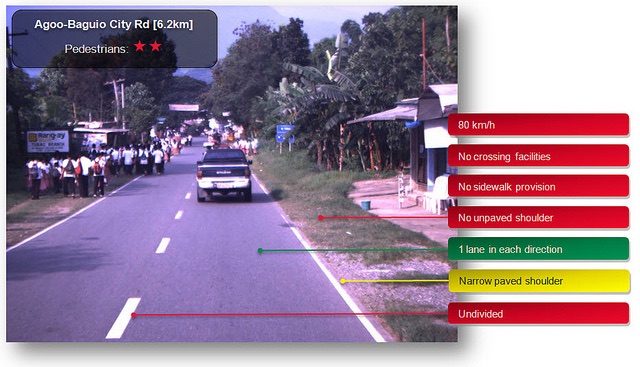SUMMARY
This is AI generated summarization, which may have errors. For context, always refer to the full article.

MANILA, Philippines – When deadly road crashes are reported on the news, the driver of the vehicle is usually thought to be the one at fault. But while the driver may have caused the crash, his actions may not necessarily be the cause of death.
In some cases, victims of car crashes survive because of good road design that helps mitigate injuries that would otherwise be fatal, said Greg Smith, Regional Director in the Asia Pacific of the International Road Assessment Program (iRAP).
The cause of a car crash can be different from the cause of death, he said. During a workshop of the Department of Transportation’s Road Safety Idea Hack event on Monday, March 13, Smith explained how infrastructure is important in preventing serious accidents and deaths resulting from road crashes.
iRAP is an organization that inspects high-risk roads, rating them for their safety design features and identifying what countermeasures can be developed to help make these roads safer for motorists, cyclists, and pedestrians.
Its Star Ratings system is based on road inspection data. Roads rated 5 stars are considered the safest roads while those with 1 star are the least safe.
In the Philippines, iRAP has surveyed 6,000 km of roads, collecting data and assigning star ratings that provide a measure of the level of safety of the roads for vehicle occupants, motorcyclists, bicyclists and pedestrians.
It then makes recommendations to improve the safety level of these high-risk roads, working with government to implement these suggestions.
This system has seen tangible results. Smith cited the case of the Agoo-Baguio City road, which was considered a very high-risk road for all types of road users for every 100-meter section.
Between July and November 2015, the Department of Public Works and Highways implemented two packages of road improvement works, such as the installation of safety signages, adding concrete barriers on curve sections and ravine, and constructing concrete road shoulders, among others.
Following the implementation of these safety measures, the road garnered a 3-star rating, an improvement from its previous 1-star rating.
While changing the design of the road can greatly reduce the risk of death or injury, Smith said that enforcement of road safety measures – such as the strict implementation of seatbelt use – is also a critical part in changing user behavior. – Rappler.com
Add a comment
How does this make you feel?
There are no comments yet. Add your comment to start the conversation.